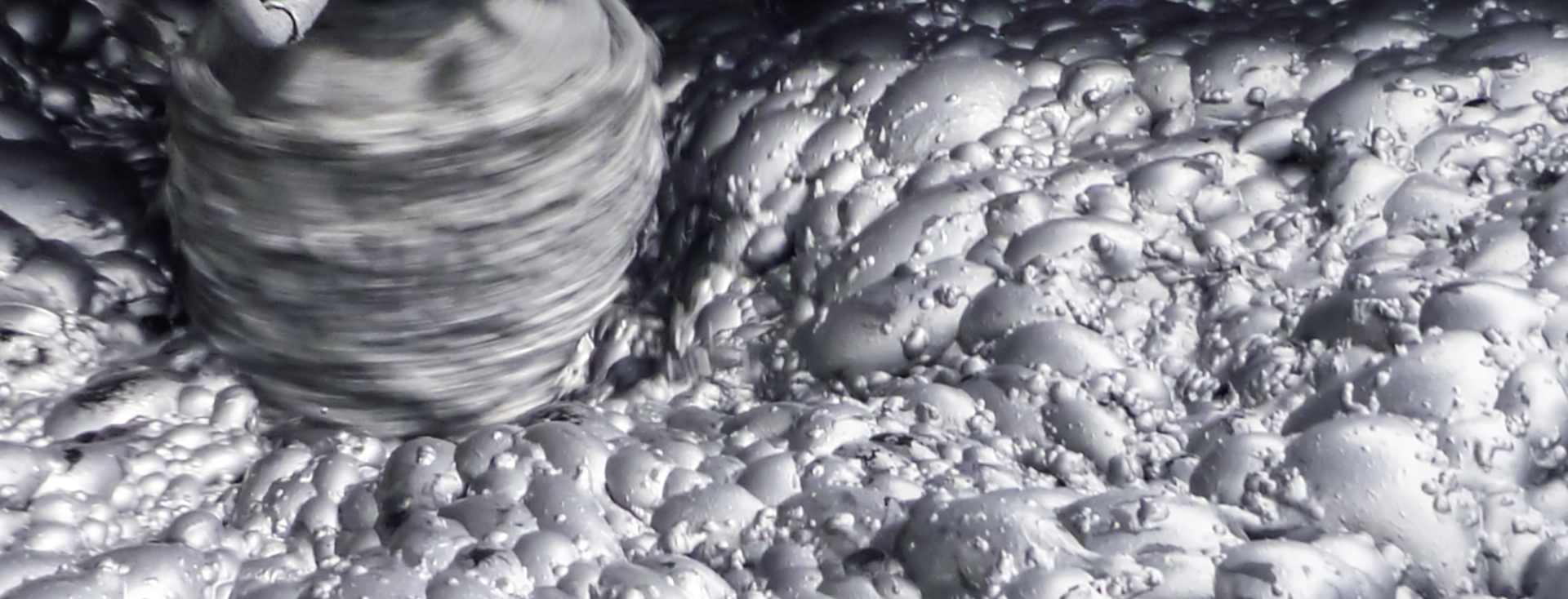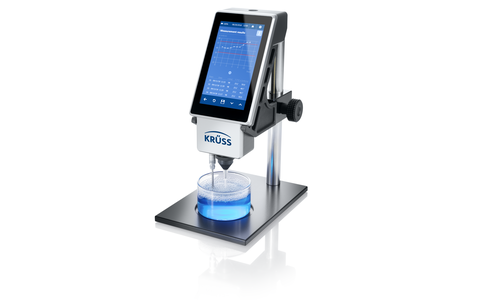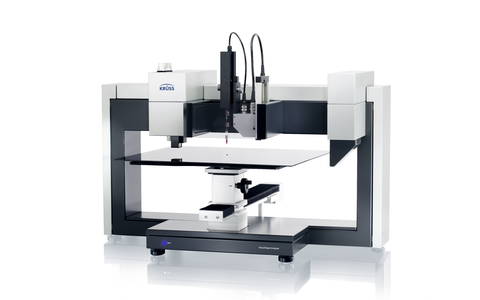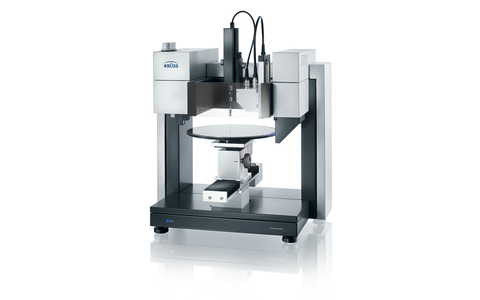
Froth flotation
Optimization of flotation separation using interfacial chemical methods
Flotation has become established as an efficient solid-liquid separating method in ore processing and for the separation of colored pigments (de-inking) in paper recycling. Hydrophobic constituents adhere more strongly than hydrophilic constituents to the surface of gas bubbles which flow through the aqueous dispersion of the solid mixture to be separated. Foaming agents are added to the liquid as part of this process. The hydrophobic particles accumulate in the foam layer on the surface where they are skimmed off. The investigation of the definitive interfacial processes and the foaming process falls within the proficiency of our measuring instruments.
Important applications of the flotation method
- Ore processing
- Paper recycling
- Sewage treatment
Characterization of the surfactants used as collecting agents with tensiometers
In many cases, the solids to be separated are initially hydrophilic and tend not to be adsorbed on gas bubbles. Surfactants are therefore used as so-called collecting agents. These adsorb with the hydrophilic molecule group on the solid to be separated as selectively as possible. They can then adsorb with the hydrophobic side on the gas-liquid interface and transport the solid upwards. Our methods for measuring the surface tension provide a comprehensive characterization of these surfactants, for example by determining the critical micelle concentration (CMC). Flotation is a highly dynamic process. Measurement of the dynamic surface tension using one of our bubble pressure tensiometers is therefore also very informative. It provides information on the speed at which the surfactant molecules move through the liquid and how fast they can adsorb at an interface.
Wettability investigation of the solid using contact angle measurements
The surface free energy of the powder and its disperse and polar parts say something about the hydrophobic or hydrophilic character of the powder. Measurements of these variables using the Washburn method indicate the extent to which hydrophobic coating is necessary. The occurrence of wetting between solid, liquid and gas bubble can be ascertained by means of captive bubble measurements. With this method, which is available for all our laboratory contact angle measurement instruments, an air bubble is introduced beneath the solid which is surrounded by liquid. The effectiveness of the collecting agent can be seen by the bubble contact angle. If this is small, the contact between air and solid, which is required during flotation, is preferred to the contact between solid and liquid.
Measurement of foamability, foam stability, and bubble size
Our foam analysis instruments measure the foamability of a liquid in order to check the efficiency of the foaming agent. The decay speed of the foam is likewise an important variable as for effective skimming, the foam-particle mixture must remain on the surface for a while in a stable state. This decay speed is measured as part of the easily reproducible foam height measurements. The formation of small foam bubbles is required for the flotation process. These lead to a large internal foam surface area and therefore to an increased adsorption capacity for the solid to be separated. Our optical method for measuring time and height-dependent foam structure provides important information for optimizing bubble size.


















